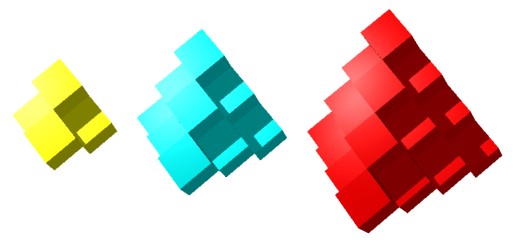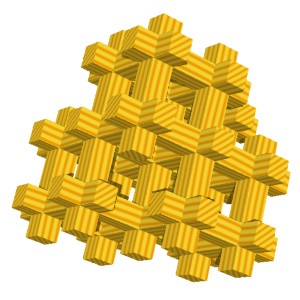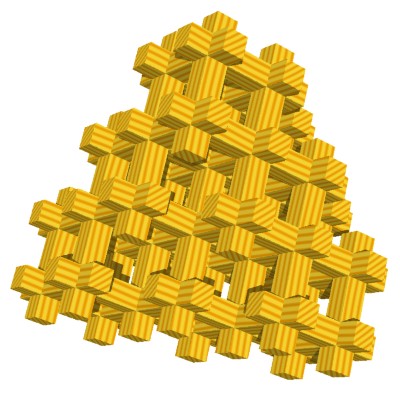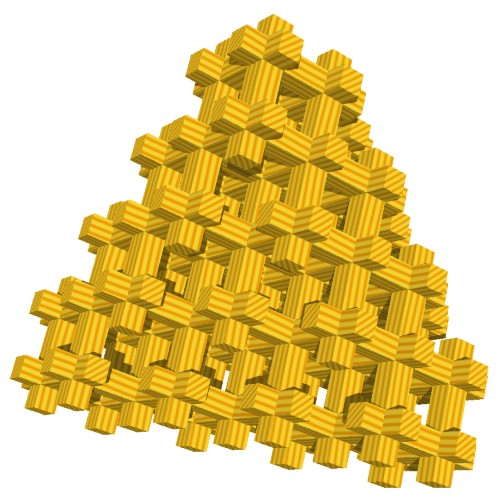Design
by Peter Query
At the description of the
Octacubes you
could see how cubes can piled up to the shape of an octahedron. Cubes can also
be put together in the shape of a pyramid as shown in the figures below. The
problem with these constructions is that the cubes in the corners actually float
in the air and fall of the structure if you try to make them.

It is possible to
make the structures above by using the Ball-in-the-Cage
Puzzle as base the same way as used in the Octacubes. The results of
thes constructions are shown in the pictures below. The first puzzle consist of
four cubes, the second of eleven and the last construction is made with 24
cubes.

The smallest
Tetracube puzzle can be made with 27 rods. Fifteen rods with a size of 18 x 2 x
2 units and twelve rods with a length of 18 x 2 x 2 units.
The next
Tetracube is made out of 48 rods in three different lengths. Twelve rods are 24
x 2 x 2 units long, 24 rods with a size of 18 x 2 x2 units and twelve rods with
a length of 12 x 2 x 2 units.

The last
Tetracube shown here is constructed with 75 pieces. Fifteen pieces with a length
of 30 x 2 x 2 units, Twelve rods with a size of 24 x 2 x 2 units, 36 rods with a
length of 18 x 2 x 2 units and the remaining twelve rods have once again a size
of 12 x 2 x 2 units.

As with the
Octacubes different possibilities exist in constructing the Tetracubes. The
challenge is to design the most complex puzzles with the most less key pieces.
All the cages can be filed with a ball or marble but you can also keep the cages
empty.